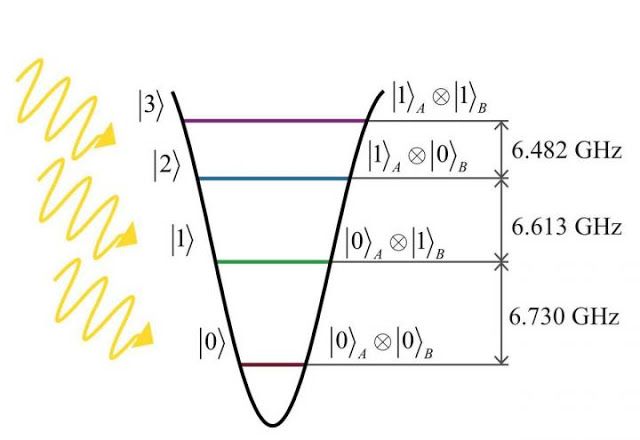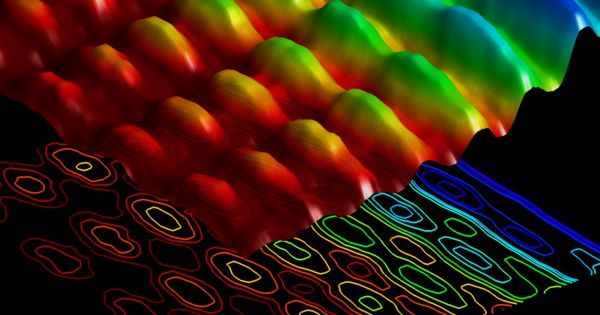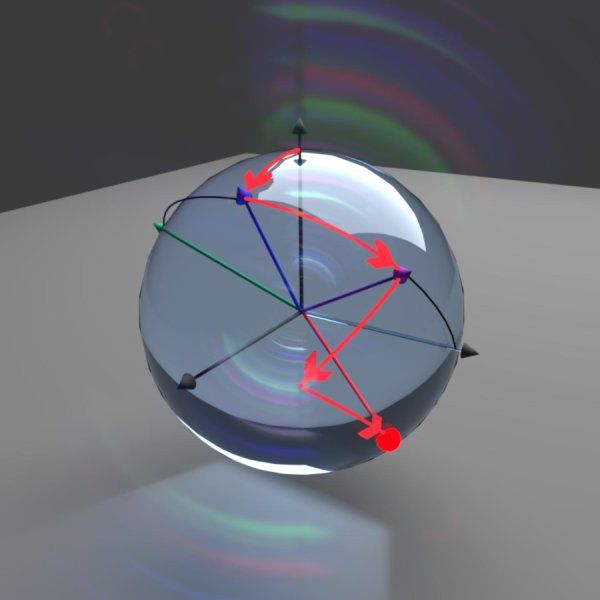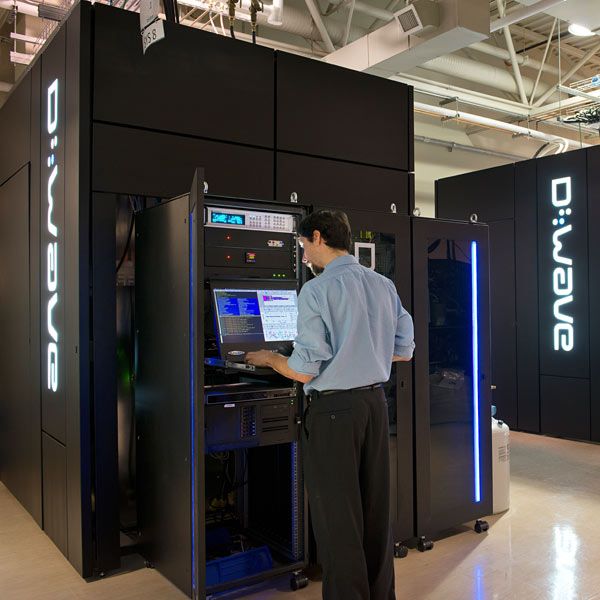
Category: quantum physics


Russia making new type of universal quantum computer with multilevel quantum qudits instead of qubits
Physicists from MIPT and the Russian Quantum Center have developed a method which is going to make it easier to create a universal quantum computer — they have discovered a way of using multilevel quantum systems (qudits), each one of which is able to work with multiple “conventional” quantum elements — qubits.
Professor Vladimir Man’ko, Scientific Supervisor of MIPT’s Laboratory of Quantum Information Theory and member of staff at the Lebedev Physical Institute, Aleksey Fedorov, a member of staff at the Russian Quantum Center, and his colleague Evgeny Kiktenko published the results of their studies of multilevel quantum systems in a series of papers in Physical Review A, Physics Letters A, and also Quantum Measurements and Quantum Metrology.

For The First Time Ever, Physicists Made A Quantum Hologram
Who wants a Quantum Hologram?
Scientists from Warsaw were able to produce a hologram of a photon. Hopefully, this method may be used to produce holograms of more complex objects and further understand quantum mechanics.
Physicists from the University of Warsaw believe that they may have achieved “the impossible.” They were able to create a hologram of a single particle of light. Previously, scientists believed that the fundamental laws of physics did not allow this, and to that end, their breakthrough allows physicists to further study quantum holography (which may give us a new way to peer into the heart of quantum phenomena).
To break this down a bit, holography takes advantage of classical interference, a phenomenon where two waves meet and form a new wave. However, property of photons called “phases” does not allow classical interference because the phases constantly fluctuate. The physicists instead used quantum interference wherein the photons’ wave functions interact.


Enterprise Fellowships to kick-start the quantum technology industry
Luv this.
The University of Bristol’s Quantum Technology Enterprise Centre (QTEC) is looking to recruit its first cohort of Enterprise Fellows that will be the next generation of quantum technology entrepreneurs.
Merging training in systems thinking, quantum engineering and entrepreneurship, QTEC will provide the necessary skills for budding innovators to develop their own business ideas and for them to branch out into the emerging field of quantum technologies.
The Centre, which is the first of its kind in the world, was funded as part of the UK’s £270 million investment into quantum technologies. These technologies exploit the laws of quantum mechanics to create practical and useful technologies that will outperform their classical rivals and that have the potential to transform artificial intelligence, healthcare, energy, finance, cyber security and the internet.
Unconventional quasiparticles predicted in conventional crystals
Another reason why we must look at all avenues of progress in Quantum. This particular discovery enriches many areas of material enrichment, QC (communications and information processing), etc. Limiting QC to only alerts from Google or maybe 1 other vendor is truly a mistake.
An international team of researchers has predicted the existence of several previously unknown types of quantum particles in materials. The particles — which belong to the class of particles known as fermions — can be distinguished by several intrinsic properties, such as their responses to applied magnetic and electric fields. In several cases, fermions in the interior of the material show their presence on the surface via the appearance of electron states called Fermi arcs, which link the different types of fermion states in the material’s bulk.
The research, published online this week in the journal Science, was conducted by a team at Princeton University in collaboration with researchers at the Donostia International Physics Center (DIPC) in Spain and the Max Planck Institute for Chemical Physics of Solids in Germany. The investigators propose that many of the materials hosting the new types of fermions are “protected metals,” which are metals that do not allow, in most circumstances, an insulating state to develop. This research represents the newest avenue in the physics of “topological materials,” an area of science that has already fundamentally changed the way researchers see and interpret states of matter.
The team at Princeton included Barry Bradlyn and Jennifer Cano, both associate research scholars at the Princeton Center for Theoretical Science; Zhijun Wang, a postdoctoral research associate in the Department of Physics, Robert Cava, the Russell Wellman Moore Professor of Chemistry; and B. Andrei Bernevig, associate professor of physics. The research team also included Maia Vergniory, a postdoctoral research fellow at DIPC, and Claudia Felser, a professor of physics and chemistry and director of the Max Planck Institute for Chemical Physics of Solids.

The Allegory of the Cave
Inspired by the Allegory of the Cave from Plato, till today’s quantum physics and multiverse theories, a visual essay about perception and knowledge as reflection of our reality.
facebook.com/visualsuspect.co/

Researchers make leap in measuring quantum states
Another major leap forward in controlling system noise in QC.
A breakthrough into the full characterisation of quantum states has been published today as a Editors’ Suggestion in the journal Physical Review Letters.
The full characterisation (tomography) of quantum states is a necessity for future quantum computing. However, standard techniques are inadequate for the large quantum bit-strings necessary in full scale quantum computers.
A research team from the Quantum Photonics Laboratory at RMIT University and EQuS at the University of Sydney has demonstrated a new technique for quantum tomography — self-guided quantum tomography — which opens future pathways for characterisation of large quantum states and provides robustness against inevitable system noise.

World’s most powerful quantum computer now online at USC
Good for USC.
Following a recent upgrade, the USC-Lockheed Martin Quantum Computing Center (QCC) based at the USC Information Sciences Institute (ISI) is now the leader in quantum processing capacity.
With the upgrade — to 1,098 qubits from 512 — the D-Wave 2X™ processor is enabling QCC researchers to continue their efforts to close the gap between academic research in quantum computation and real-world critical problems.
The new processor will be used to study how and whether quantum effects can speed up the solution of tough optimization, machine learning and sampling problems. Machine-learning algorithms are widely used in artificial intelligence tasks.